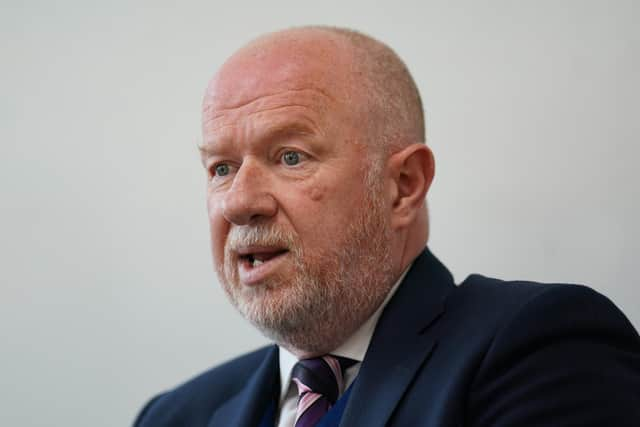Crime is falling so why is confidence in policing so low? - Dr Alan Billings
Most will have registered his general comment – repeated in different ways throughout the report – that he couldn’t recall a time ‘when the relationship between the police and the public was more strained than it is now’.
In one way that seems hardly surprising, given all the shocking instances of bad police behaviour that have dominated the media for the past year, not least, though not entirely, within the Met. But in another way, it seems strange.
Advertisement
Hide AdAdvertisement
Hide AdThe chief inspector says that one reason for the lack of confidence in the police is that they ‘aren’t always focusing on the issues that matter most to the public’.


Those issues must surely include reducing crime; this should be seen as the top priority for the police. If crime is falling, therefore, you might reasonably expect public confidence to go up.
So it probably comes as a surprise to read ‘Crime is going down…’ He goes on: ‘England and Wales are arguably safer than they have ever been’. He sets out a table taken from statistics gathered through the Crime Survey for England and Wales (CSEW) which is generally recognised as the most reliable source of crime data since it captures all crimes, including those that are not reported to and recorded by the police. This shows a long-term reduction in crime, excluding fraud and computer misuse, since the mid-1990s when it reached a peak.
Of course, not all this reduction is due to police activity. Householders are getting better at securing their properties and car manufacturers have made vehicles more secure. But this and policing has seen crime fall.
Advertisement
Hide AdAdvertisement
Hide AdSo how can it be that if we ask the police to cut crime and crime is being steadily reduced, public opinion is, apparently, not influenced by this? The chief inspector gives part of the answer.
He notes that during the course of a year, most people have no contact with the police at all – about 16 per cent. People’s perceptions of crime and policing are, therefore, driven by the media. But this is not just the traditional media – the press and the broadcasters – it is also social media.
The chief inspector writes, ‘Perception is equally as important as reality.’ Social media can amplify the impact a crime can have; it can also lead to the rapid spreading of false information – something we saw last week in Wath when a misleading account of someone’s alleged actions led to a man being attacked.
But at a time when there is so much attention on poor police behaviour, it gets harder to have encouraging stories given any space and they are soon drowned out anyway.
Advertisement
Hide AdAdvertisement
Hide AdWhat do we see in South Yorkshire? Two things – and again something of a paradox. While general trust and confidence has fallen – as the chief inspector notes – victim satisfaction is stable.
A shortened version of the Police and Crime Commissioner for South Yorkshire’s latest blog post.